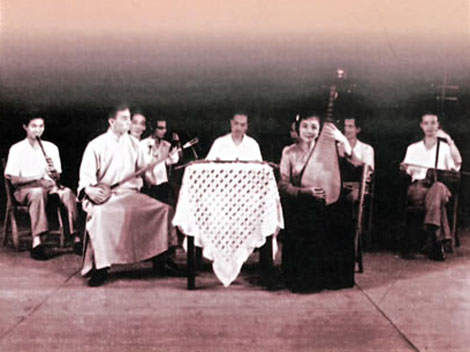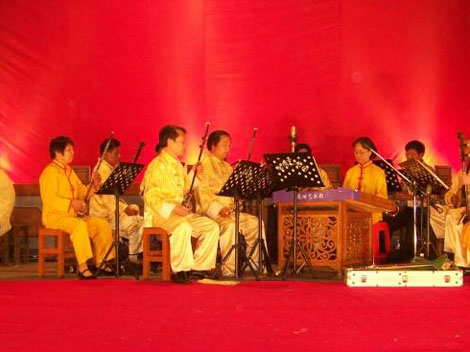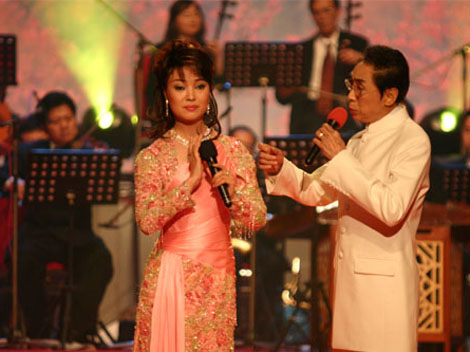
Cantonese opera singing means Guangdong melodies. The music is delicate, sweet, tender and soft. It is an important member of the family of Chinese quyi Sung in the GuangZhou, or Cantonese, dialect, it is popular in Guangdong Province, the Guangxi Zhuang Autonomous Region, Hong Kong and Macao. In addition, it has spread to Southeast Asia and North America, where overseas Chinese of Guangdong origin have settled in large numbers.

The source of Cantonese opera singing is Cantonese Opera arias, without make up or acting. In the Daoguang reign period of the Qing Dynasty, the Ba yin Ban lived on per forming Cantonese Opera arias, using vocal music and the theatrical speech of Cantonese opera, to express the different roles. Later, blind women singers traveled from street to street and sang the different roles of theatrical characters. They further developed the art of Ba Yin Ban, with each singer taking on several roles of stage characters. Their songs were popular for over 6o years. The most famous opera arias by the blind singers were eight in number, among which were Baili Xi Meets His Wife, Datyu buriss Flowers and Deserting Chu and Going over to Han.

Following the establishment of the Republic of China, sighted females made their appearance as Cantonese singers in tea houses, replacing the theatrical speech with Cantonese dialect. Falsetto was abandoned, and replaced with a true vocal chord. Voices were divided into the male ones dahou and pinghou, as well as a female one known as Zihou. This marked the most flourishing period of Cantonese music, becoming known as the "age of female Cantonese opera singing singers."
For nearly a century, Cantonese opera singing has forged ahead with the march of time. it blends well with other arts, making innovations and enriching itself. Vocal music, in partcular, developed well. For instance, Cantonese opera singing has adapted a great many things from Yueju (Shaoxing Opera) to compose poems in a given ci tune. The ban, clapper, and huang or harmoniphone are used. It makes use of the Dragon Boat quyi southern pronunciation, Cantonese folk songs of praise or eulogy, the "wooden fish'- song, and ditties to compose the ci tunes. The two-stringed gaohu and zither, its chief musical instruments, are played, together with saxophones, violins and electronic organs. Cantonese opera singing is derived from Yueju (Shaoxing Opera). The two have blended with each other in vocal music over a long period of time. They basically produce the same melodies and perform the same programs, due to their intimate relationship, which leads to their common development.